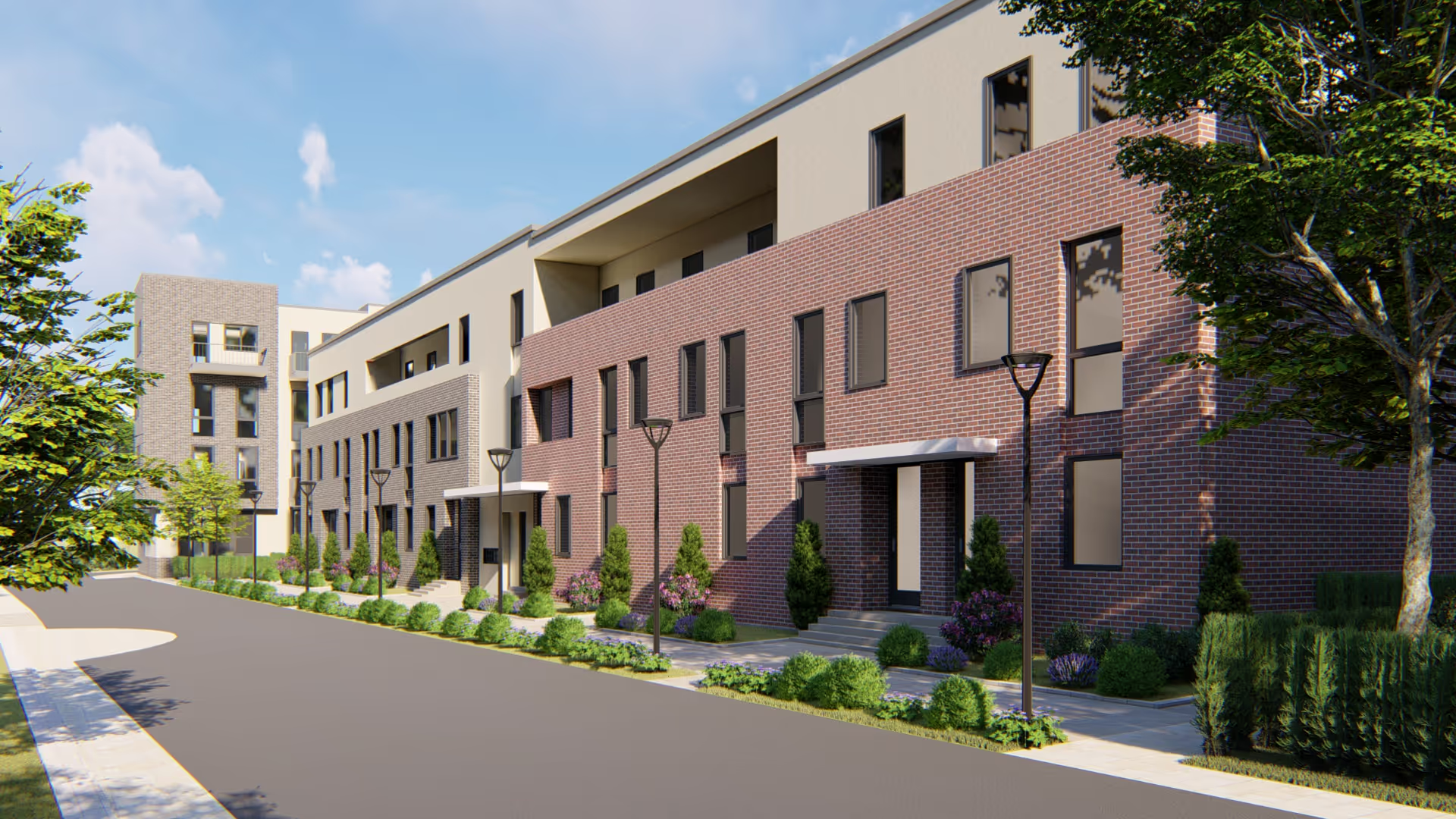Practical example of sustainable construction: Innovative circular economy in the Hamburg Water Cycle

The Hamburg Water Cycle is an excellent pioneering project for sustainable construction and climate-neutral living. As part of the project, measures are being implemented which have a holistic approach to energy supply and wastewater disposal in urban environments and reduce CO2 emissions. Investors, owners, tenants and science benefit.
Wastewater turns into green energy in the Jenfelder Au
that Jenfelder Au residential district In eastern Hamburg, it sets ecological and social standards that are unique in Europe. As the first residential district, all newly built houses are successfully built on the ones that have existed since 2019 Hamburg Water Cycle , which was implemented with the help of federal and European Union funding. In September this year, interested parties and residents were able to see for themselves the efficiency of the self-catering system in organized expert tours in compliance with hygiene regulations.
The basic idea of the Hamburg lighthouse project is to regard the infrastructure areas of water and energy not as separate fields, but as interlocking areas. This not only protects drinking water as a resource, but also increases its usefulness by closing material cycles and increasing energy generation from waste water.
Cost-saving waste water separation in the Hamburg Water Cycle
In addition to alternative concepts such as vacuum flushing in the toilet, the elementary component of the Hamburg Water Cycle is the separate consideration of wastewater. The following sub-flows are differentiated according to origin:
- blackwater — waste water from the toilet
- Grauwasser — Proportion of household waste water that is not discharged through the toilet
- rainwater — natural waste water due to precipitation
In a normal sewage cycle, black, grey and rainwater are bundled and collected and fed into the wastewater treatment plant. However, this approach is not particularly sustainable, as treatment consumes an enormous amount of energy and can be used differently depending on the partial flow of the wastewater. This is where the Hamburg Water Cycle comes in and does not combine the partial flows of wastewater, but collects them separately. In this way, the specific properties can be used in the best possible way.
Energy-saving purification of black water using biogas plants
The black water is contaminated with human faeces and also contains organic substances such as toilet paper. Black water contains a lot of phosphate and nitrogen and is therefore particularly rich in nutrients. Since, in addition to nutrients, there are also many pathogens and drug residues, energy-intensive cleaning is mandatory before black water is returned to nature.
As a result of mixing with grey and rainwater, this purification is usually complex due to the significantly increased quantity. When black water is used sustainably, as is the case in the Hamburg Water Cycle, the chemically bound energy of the organic substances in black water is dissolved through anaerobic treatment — bacterial strains are added, which stimulate natural fermentation. For example, electrical energy can be generated from black water through recycling in a biogas plant. The biogas is converted into electricity in cogeneration plants, which generate not only electricity but also heat from the biogas.
Intelligent reuse of greywater as garden irrigation
When washing hands, washing dishes, washing clothes and cooking, gray water is produced. In contrast to black water, gray water contains less organic substances, is therefore less nutrient-poor and contains only a few pathogens and drug residues. Cleaning is significantly less complex than with black water.
In the Hamburg Water Cycle, parts of the gray water are reused as process water, for example for flushing toilets or watering the garden. The rest is sent to treatment, which can be significantly easier and less energy-intensive than with black water. After purification, the partial flow is fed into natural waters.
Separating rainwater prevents overloads and strengthens flood protection
Rainwater is generally polluted with little or no pollution. Any contamination that occurs can be traced back to the area and soil on which the rainwater falls. Especially in cities, exhaust gases occasionally cause pollutants in seeped rainwater.
Traditional systems are quickly overloaded, particularly during heavy rainfall, as is increasingly expected due to climate change. Instead of diverting the water, the Hamburg Water Cycle uses local use. Water is retained in ponds and retention basins to avoid overloading the sewage system during heavy rain. This method not only strengthens flood protection, but also a natural water cycle.
Conclusion: The Hamburg Water Cycle as a sustainable wastewater and energy concept
The Hamburg Water Cycle is an important step towards a more sustainable wastewater and energy system and is therefore absolutely sustainable. The innovative and holistic concept not only increases the well-being of owners and tenants of the connected properties, but also makes a major contribution to environmental protection and research on micropollutants in wastewater. It is hoped that this successful project will pave the way for similar projects across Europe.



